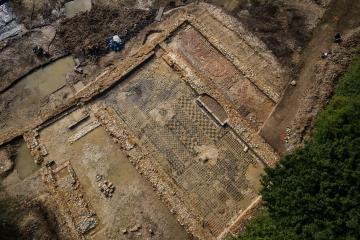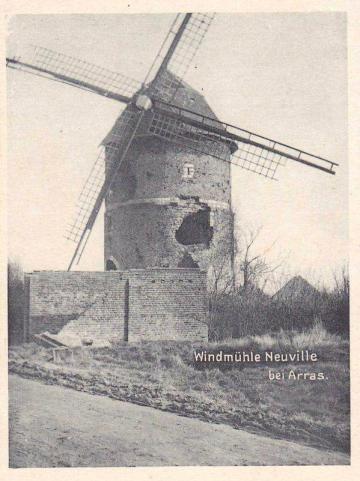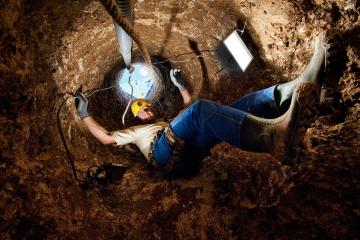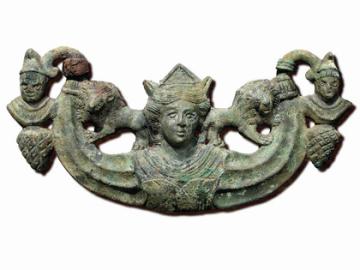You are here
News
- (-) Remove Discoveries filter Discoveries
- (-) Remove Hauts-de-France filter Hauts-de-France
The prehistoric site of Renancourt, in Amiens, has been known for many years and long remained one of the few sites providing evidence for human presence in northern France during the Early Upper Paleolithic (35,000 – 15,000). Discovered in 2011, during an Inrap diagnostic operation, the site of Amiens-Renancourt 1 has been under full excavation since 2014. During the 2019 season, an exceptional Gravettian “Venus,” some 23,000-years-old, was discovered.
At Saint-Martin-d’Hardinghem, in advance of the construction of flood retention basins in the Aa river valley, Inrap excavated, in partnership with the Department of Pas-de-Calais, part of the country residence of the bishops of Thérouanne, dated to the High Middle Ages. The archaeologists uncovered 200 m² of decorated pavements, all of which are very well preserved, which is rare.
The discovery of an surprising concentration of graffiti and inscriptions made by soldiers during the First World War reoriented the investigation to a formerly unknown activity at this site: touristic visits to the underground dwellings during the First World War.
The film “Joyeux Noël” by Christian Carion recounted the truces between soldiers during the First World War, episodes of “fraternization” forgotten in history.
An exceptional Gallo-Roman sanctuary is currently being revealed at Pont-Saint-Maxence (Oise). This Inrap excavation has been authorised by the government (Drac Picardie) and is taking place prior to the construction of a shopping centre.
In the context of archaeological research conducted under the curation of the State (Drac Picardie), in advance of the construction of the canal Seine-Nord Europe, and under the contracting authority of Voies navigables de France, an Inrap team recently discovered a Gallo-Roman sanctuary (fanum) in the districts of Nesle and Mesnil-Saint-Nicaise (Somme).
On the future site of the Seine-North Europe canal, a team of INRAP archaeologists have excavated the Neolithic sites of Villers-Carbonnel, under the curation of the State (Drac Picardie). This excavation, covering a surface of 4.35 hectares, has revealed an exceptional terra cotta statuette 21 cm long. Female representations of this type are very rare in France.
A team of Inrap archaeologists has begun excavating at Famars (Nord) in advance of the construction of the Mont Houy technopole, a 45 hectare technological and scientific activity center.








